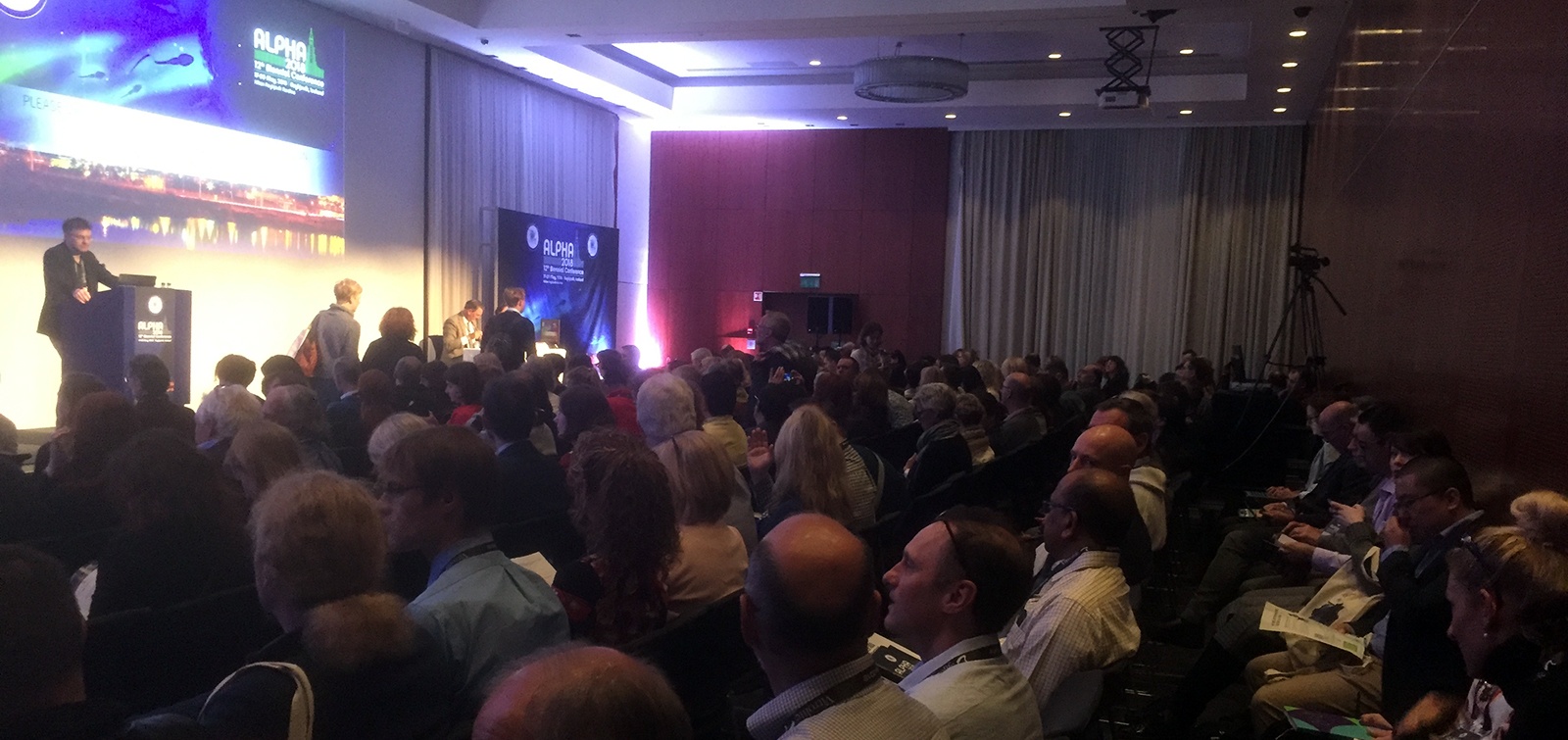The 12th Alpha Biennial Congress recently took place in spectacular Reykjavik, Iceland. Around 400 participants gathered on the faraway island to get updates on the latest research in the field of IVF. For those of you who could not attend, team Vitrolife has put together a recap of the highlights.
A smorgasbord of scientific presentations
The scientific program during the three days at ALPHA was strong as usual, covering a range of topics including new biomarkers for embryo quality, future technologies to improve IVF, gene editing, IVM, gene imprinting and epigenetics, trends in cryopreservation, biology of mitochondrial function, effects of maternal health on embryo quality, QC and KPI management in the lab, and of course use of time-lapse to improve workflow and clinical outcome.
Chromosome abnormalities
The first key notes set the scientific bar high by discussing in vitro culture until day 14 and how embryos develop. Dr. Marta Shahbazi (UK) asked who is to blame for pregnancy losses: the embryo or the endometrium? She showed that chromosomal abnormalities are detected in half of the early pregnancy loss cases, while foetal abnormalities are present in 85% of early pregnancy losses. With the possibility to culture embryos in vitro beyond the point of implantation, these problems can be investigated further.
Dr. Melina Schuh (Germany) reminded the audience that aneuploidy in eggs is the leading cause for pregnancy loss and several congenital disorders such as Down syndrome. Besides an explanation on how aneuploidy can occur, she presented a method allowing to remove specific proteins from the cell, which was very exciting.
Vitrolife Symposium “Can the lab have an impact on mosaicism?”
Our traditional symposium was presented and chaired by Dr. Mark Larman, CSO at Vitrolife. We were delighted to have world renowned speakers Dr. Mandy Katz-Jaffe (USA) and Prof. Barry Behr (USA).
In Dr. Katz-Jaffe’s talk “Minimising your mosaic embryos” she highlighted that blastocyst morphology is not strictly correlated to chromosomal normality. She explained the origin of chromosomal mosaicism and how laboratory conditions may contribute to seemingly different rates of mosaicism reported.
Prof. Behr highlighted the important topic of quality management within the IVF lab. He discussed that using external monitoring of critical equipment and parameters is important in minimising variables within the laboratory. Equally important is the assessment of key indicators to monitor the performance of the lab, which can include rates of aneuploidy and mosaicism
Dr. Katz-Jaffe will speak again at our ESHRE symposium. You are welcome to join us for more on how to reduce your mosaic embryos by optimising your laboratory conditions.
Embryo selection from different angles
Prof. Denny Sakkas (US) presented an overview of potential non-invasive biomarkers for embryo selection. He highlighted the challenges in looking for secreted factors which are masked by human serum albumin, and therefore, require the use of a more defined protein source (recombinant albumin). He also introduced some novel optical methods for embryo selection such as fluorescence lifetime imaging microscopy to look at cellular autofluorescence.
To increase efficiency maybe one or several of these such technologies could be performed on a “lab-on-a chip”. Prof. Gary Smith (US) showed some interesting videos where movement and analysis of small volumes of media can be performed on microfluidic devices.
Prof. Jonathan Van Blerkom (US) showed that local transient temperature changes occur in the oocyte during development and that mitochondrial energy levels are not affected by women’s age.
Is it time to fine-tune the current fertilisation assessment?
This was a question asked by Dr. Alison Campbell (UK). In her presentation she showed data about differences in PN fading times between ICSI and IVF patients. The data indicates that without time-lapse, there is a greater risk of missing PN check at the time suggested by the ESHRE/ALPHA consensus. The data suggested that for static evaluation one should look 1-2 hours earlier to avoid incorrectly assessing fertilisation.
From epigenetics to the IVF laboratory
The second day started with a session on epigenetics, including an excellent talk of Prof. David Gardner (Australia) about metaboloepigentics, detailing the biochemical pathways and cellular mechanisms that control epigenetics and embryo implantation.
Dr. Alison Campbell (UK) showed results of their customised algorithms for embryo evaluation and that the use of time-lapse resulted in significant improvement in clinical outcomes in specific patient groups.
The session on cryobiology included a talk from Dr. Peter Nagy (US) who is in favor of freeze-all and a contribution by Dr. Amir Arav (Israel) who presented on an automated method for vitrification and the progress in freeze-drying of gametes.
The interest in genetics continued with Dr. Nathan Treff (USA) who discussed the challenges associated with comprehensive screening techniques and difficulties in determining mosaic embryos from a single embryo biopsy. Perhaps in the future genetic issues could be rectified using gene editing technologies such as CRISPR, however, there is still a lot of research that needs to be performed as highlighted by a very interesting talk by Prof. Lovell-Badge (UK).
Weight loss, does it matter for outcome?
The third and final day included talks in the effects of diet and diabetes on outcome of IVF. Dr Snorri Einarsson (Iceland) presented some recent data indicating that weight loss in obese female patients does not necessarily increase the likelihood of successful outcome.
In the last talk of the conference Dr. Marie Louise Grøndhal (Denmark) showed that poor functioning mitochondria are not removed from oocytes and are thus carried over to the futuregenerations.
Finally we want to thank all of you who came to our symposium or to our booth! We look forward to seeing you again, maybe already at ESHRE in Barcelona on July 1-4?
Topics: IVF community insights
